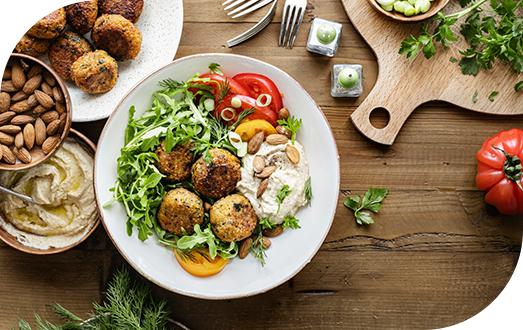What is the principle of treatment in Ayurveda?
According to the philosophy of Ayurveda, health brings happiness and vice versa – happiness and harmony bring health.
Therefore, the treatment is aimed at eliminating the imbalances that hinder the harmony between the body, mind and emotions of the person.

Types of Energies in Ayurveda

• Vata (air and ether) – responsible for blood circulation, heartbeat and breathing;
• Pitta (fire and water) – responsible for metabolism and the exchange of substances;
• Kapha (water and earth) – responsible for the immune system and body growth.
In order to be in good health, it is necessary for the three Doshas to be in balance, with one of them being the leading one.
If there is an imbalance between the energies in the body, sooner or later a disease process begins.
Diagnostics according to Ayurvedic medicine
Types of treatment and prevention according to Ayurveda
• Kayachikitsa (general medicine): treatment of general ailments.
• Kaumara-Brtuya and Bala Roga: treatment of children.
• Shalaya Tantra: Surgical Treatment.
• Salakaya Tantra (Ophthalmology): treatment of the teeth, eyes, nose, ears, etc.
• Bhuta – Vidya: treatment of diseases caused by microorganisms or alcohol use.
• Agada Tantra: Healing through Poison Antidotes.
• Rasayana – Tantra (Geriatrics): Natural Methods of Rejuvenation.
• Vajikarana Tantra (Aphrodisiacs): Reproductive Health and Libido.

Natural nutrition according to the Ayurvedic tradition

• It is important to use quality, fresh and freshly prepared products.
• Food is prepared in a clean room, with clean clothes and bright thoughts.
• It is served beautifully, offered with love and consumed in a calm state of mind and with deep attention to the food.
• Prepared food according to Ayurveda should be consumed within 3 hours of its preparation.
• In the Ayurvedic regimen, three meals a day are recommended, and they are tailored to the individual body type of the person.
Types of food in Ayurveda
Food with sattva guna
Includes products that have a juicy, pleasant buttery taste and pleasant aroma, such as:
• Apricot
• Orange and tangerine
• Watermelon
• Aronia
• Pear
• Pomegranate
• Buckwheat
• Walnuts
• Ginger
• Corn
• Gooseberry
• Carrot
• Fresh fruits and vegetables
• Cereals
• Spices
• Dairy products
• Lentils, etc.
Food with rajas guna
Includes products with an overly pronounced taste or smell, excessively hot, bitter or salty dishes, as well as dry, hot and spicy food:
• Zucchini
• Cashew
• Kefir
• Cinnamon
• Lemon
• Rye and peach
• Salad
• Almond
• Hazelnut
• Barley bulgur
• Sunflower seeds
• Cucumber
• Pepper
• Coffee, green tea, etc.
Food with tamas guna
Includes products that are not fresh and were prepared more than 3 hours before the meal, as well as:
• Meat
• Fish
• Eggs
• Mushrooms
• Onion and garlic
• Canned foods and semi-finished products
• Bread
• Yeast
• Spirits
• All products that have undergone a fermentation process other than lactic acid.
For example, if we start eating an apple which is Sattva guna and leave it uneaten for some time, then it turns into Rajas and after decaying into Tamas.



